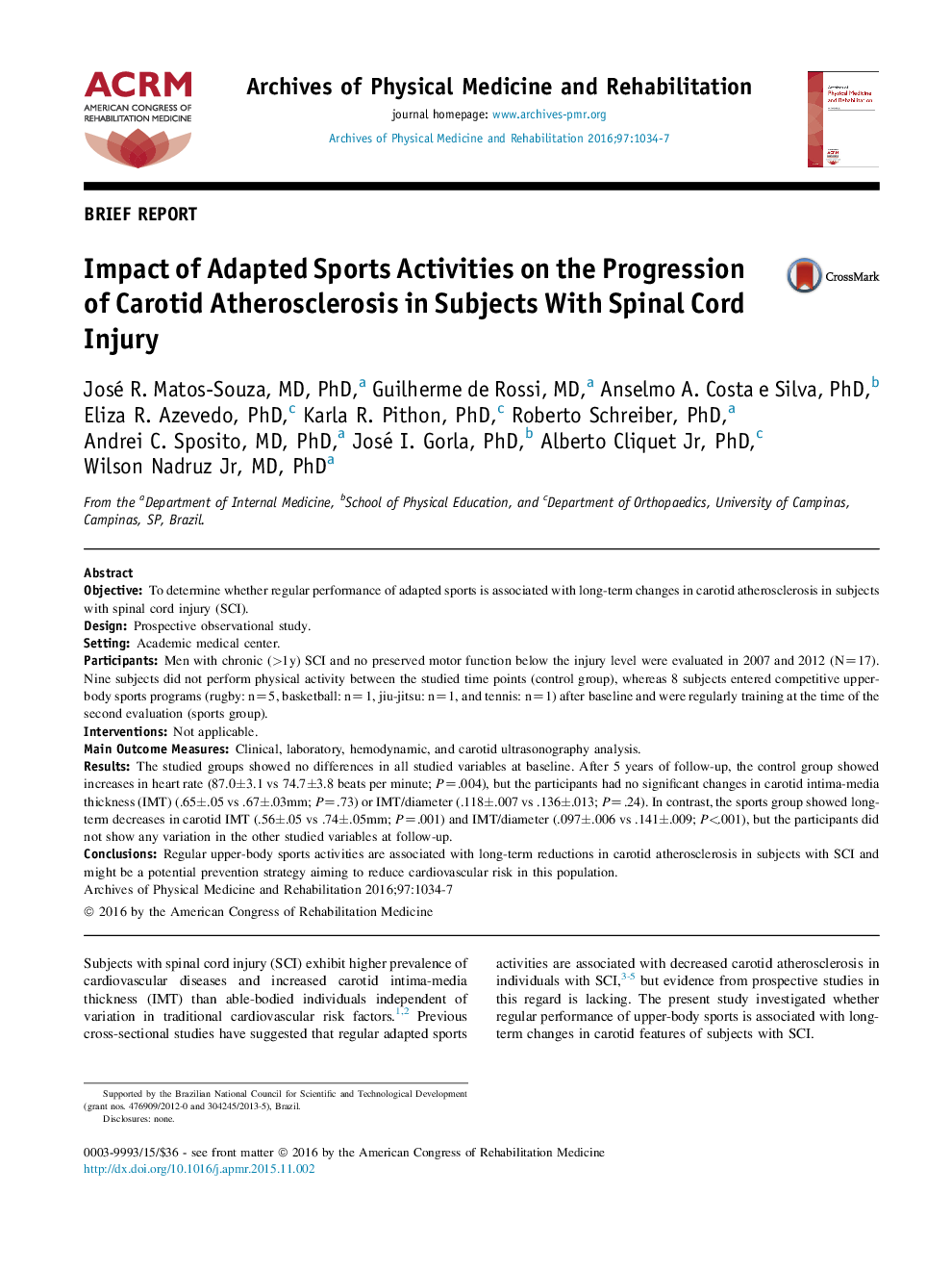| کد مقاله | کد نشریه | سال انتشار | مقاله انگلیسی | نسخه تمام متن |
|---|---|---|---|---|
| 3447905 | 1595666 | 2016 | 4 صفحه PDF | دانلود رایگان |
ObjectiveTo determine whether regular performance of adapted sports is associated with long-term changes in carotid atherosclerosis in subjects with spinal cord injury (SCI).DesignProspective observational study.SettingAcademic medical center.ParticipantsMen with chronic (>1y) SCI and no preserved motor function below the injury level were evaluated in 2007 and 2012 (N=17). Nine subjects did not perform physical activity between the studied time points (control group), whereas 8 subjects entered competitive upper-body sports programs (rugby: n=5, basketball: n=1, jiu-jitsu: n=1, and tennis: n=1) after baseline and were regularly training at the time of the second evaluation (sports group).InterventionsNot applicable.Main Outcome MeasuresClinical, laboratory, hemodynamic, and carotid ultrasonography analysis.ResultsThe studied groups showed no differences in all studied variables at baseline. After 5 years of follow-up, the control group showed increases in heart rate (87.0±3.1 vs 74.7±3.8 beats per minute; P=.004), but the participants had no significant changes in carotid intima-media thickness (IMT) (.65±.05 vs .67±.03mm; P=.73) or IMT/diameter (.118±.007 vs .136±.013; P=.24). In contrast, the sports group showed long-term decreases in carotid IMT (.56±.05 vs .74±.05mm; P=.001) and IMT/diameter (.097±.006 vs .141±.009; P<.001), but the participants did not show any variation in the other studied variables at follow-up.ConclusionsRegular upper-body sports activities are associated with long-term reductions in carotid atherosclerosis in subjects with SCI and might be a potential prevention strategy aiming to reduce cardiovascular risk in this population.
Journal: Archives of Physical Medicine and Rehabilitation - Volume 97, Issue 6, June 2016, Pages 1034–1037
